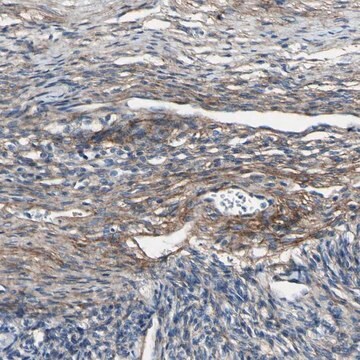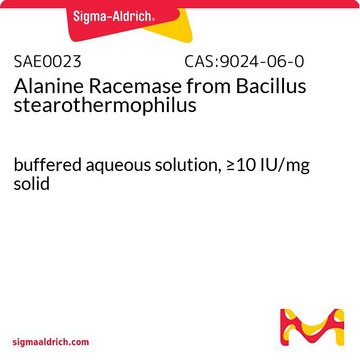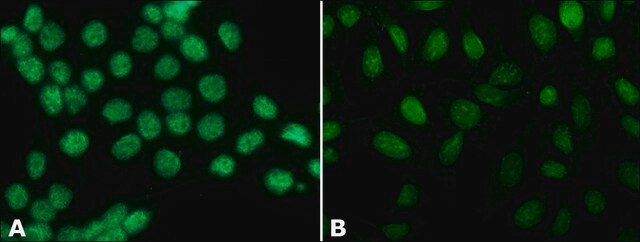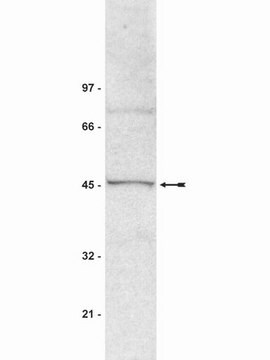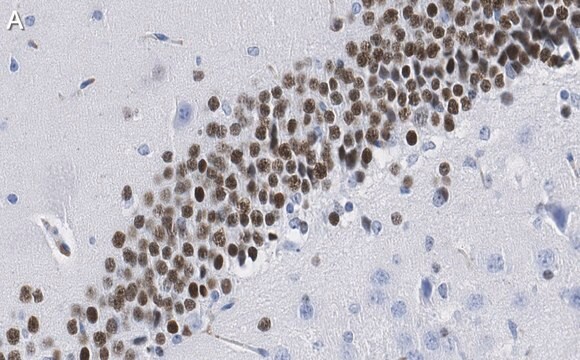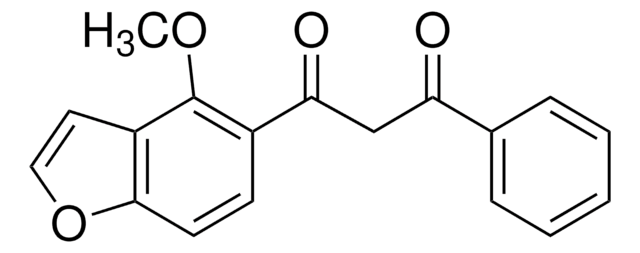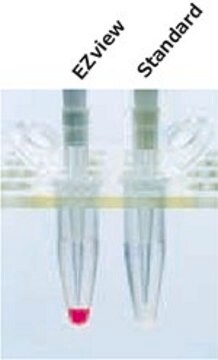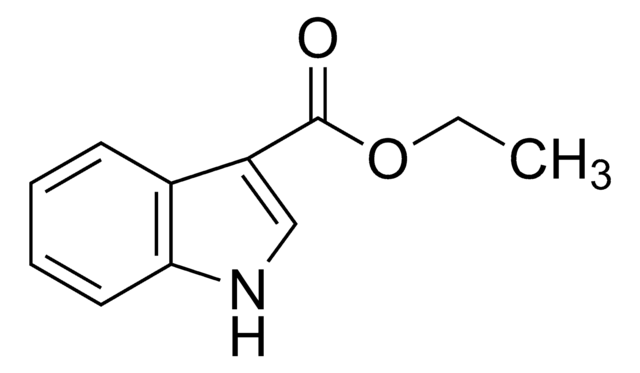S8316
Anti-SUV39H1 Histone Methyltransferase antibody
mouse monoclonal, 44.1
About This Item
Prodotti consigliati
Nome del prodotto
Monoclonal Anti-SUV39H1 Histone Methyltransferase antibody produced in mouse, ~2 mg/mL, clone 44.1, purified immunoglobulin, buffered aqueous solution
Origine biologica
mouse
Coniugato
unconjugated
Forma dell’anticorpo
purified immunoglobulin
Tipo di anticorpo
primary antibodies
Clone
44.1, monoclonal
Stato
buffered aqueous solution
Reattività contro le specie
mouse, human
Concentrazione
~2 mg/mL
tecniche
immunocytochemistry: suitable
immunoprecipitation (IP): suitable
indirect ELISA: suitable
microarray: suitable
western blot: 2-4 μg/mL using extract of HeLa nuclear cells
Isotipo
IgG1
N° accesso UniProt
Condizioni di spedizione
dry ice
Temperatura di conservazione
−20°C
modifica post-traduzionali bersaglio
unmodified
Informazioni sul gene
human ... SUV39H1(6839)
mouse ... Suv39h1(20937)
Descrizione generale
Specificità
Immunogeno
Applicazioni
Western Blotting (1 paper)
For immunoblotting, a working concentration of 2-4 mg/mL is recommended using an extract of HeLa nuclear cells.
Azioni biochim/fisiol
The overall identity between the human and mouse SUV39H1 amino acid sequences is 95%, both lacking an N-terminal 155 amino acid stretch from Drosophila Su(var)3-9. As a consequence, cross-species amino acid identity reaches 42% between the fly and the two mammalian proteins. The SUV39H1 protein consists of three regions: a SET domain, a 110 amino acid domain containing several cysteine conserved residues, and a chromo domain.
Stato fisico
Esclusione di responsabilità
Non trovi il prodotto giusto?
Prova il nostro Motore di ricerca dei prodotti.
Codice della classe di stoccaggio
10 - Combustible liquids
Classe di pericolosità dell'acqua (WGK)
WGK 3
Punto d’infiammabilità (°F)
Not applicable
Punto d’infiammabilità (°C)
Not applicable
Scegli una delle versioni più recenti:
Certificati d'analisi (COA)
Non trovi la versione di tuo interesse?
Se hai bisogno di una versione specifica, puoi cercare il certificato tramite il numero di lotto.
Possiedi già questo prodotto?
I documenti relativi ai prodotti acquistati recentemente sono disponibili nell’Archivio dei documenti.
Il team dei nostri ricercatori vanta grande esperienza in tutte le aree della ricerca quali Life Science, scienza dei materiali, sintesi chimica, cromatografia, discipline analitiche, ecc..
Contatta l'Assistenza Tecnica.